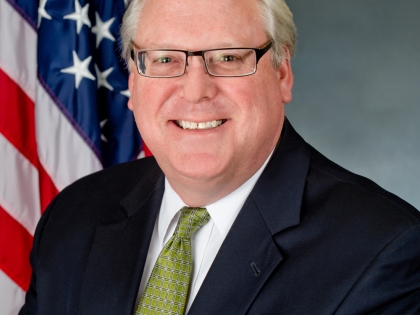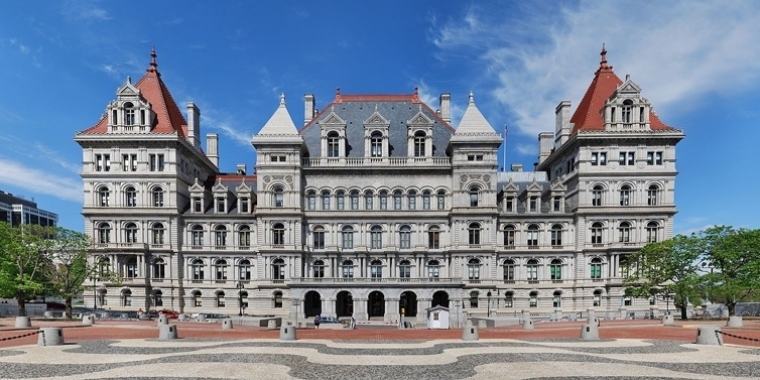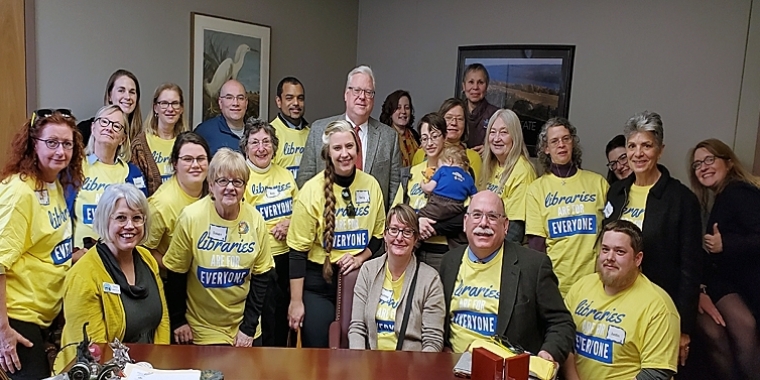
Senator O'Mara's weekly column 'From the Capitol' ~ for the week of April 25, 2022 ~ 'Carrying out an envisioned commitment to water quality'
April 25, 2022
-
ISSUE:
- Water quality

Senator O'Mara offers his weekly perspective on many of the key challenges and issues facing the Legislature, as well as on legislative actions, local initiatives, state programs and policies, and more. Stop back every Monday for Senator O'Mara's latest column...
This week, "Carrying out an envisioned commitment to water quality"
When I served as chair of the state Senate Environmental Conservation Committee from 2015 to 2018, one of the most significant accomplishments during that time -- one that’s still paying benefits to local communities, in fact -- was the creation of what was known as the “Water Infrastructure Improvement Act of 2015.”
It was an initiative that our Senate Republican conference developed and fought for in recognition of the rapidly emerging and enormous challenges facing localities throughout the Southern Tier and Finger Lakes regions, and statewide. The idea was to establish a state grant program to provide badly needed assistance to localities for both drinking water and wastewater infrastructure improvement projects, including sewer and municipal pipeline repairs.
In those earliest days of the effort, a total of $75 million was made available for an initial round of funding.
We fully recognized, however, that it would be just a beginning. In early 2017, a state comptroller’s report, “Drinking Water Systems in New York: The Challenges of Aging Infrastructure,” projected that $40 billion would be needed for water quality and sewer infrastructure repairs across New York over the following two decades. Other estimates pegged that number to be twice as high.
The comptroller’s 2017 report stated, “Many drinking water systems in New York are over 100 years old and operating far beyond their useful life. Too many places are dealing with water main breaks, leaks, contaminated drinking water and other problems that can result in public health threats, property damage, or inconvenience for residents and businesses. New York needs to invest significantly in this area, or we’re going to suffer the consequences.”
Since the launch of the Water Infrastructure Improvement Act of 2015, through ongoing legislative support, the state’s commitment to local water infrastructure and other water quality challenges and crises has been expanded and strengthened in myriad ways, and continues to make an enormous difference.
These challenges and crises dominated the Legislature’s attention over the several years I was fortunate to chair the Environmental Conservation Committee and we have fully recognized that the issue of water quality will be here to stay. From Harmful Algal Blooms (HABs) to invasive species, and from non-point source pollution to water quality infrastructure, how we understand and proactively respond to these concerns is fundamentally important -- important for drinking water, the tourism economy, and the recreational use of lakes and other waterways.
Consequently, I have welcomed many opportunities to help develop and strongly support a comprehensive series of initiatives to combat invasive species, address flood control, respond to HABs, and, as noted above, improve drinking water safety and the overall quality of water infrastructure for all New Yorkers.
In addition to the Water Infrastructure Improvement Act of 2015, the 2015-16 state budget, for the first time, established a fully funded Environmental Protection Fund (EPF) that has continued to support many critical conservation initiatives including clean air and water projects, flood control and restoration, and open space preservation.
In other words, it’s ongoing work through which the state continues to make vital investments across our communities and, therefore, strengthen the state-local partnership in some of the key ways we had envisioned back in 2015.
Consequently, early last week, we welcomed the announcement that hundreds of millions in state investment is being distributed, in every region, to support nearly 200 critical water infrastructure improvements.
Across the Southern Tier region, more than $38.1 million of assistance is expected to help create approximately 3,500 jobs and save regional localities more than $133 million. Specific investments will support local projects in, among others, the village of Addison (Steuben County); village of Bath (Steuben); town of Big Flats (Chemung); Chemung County; city of Hornell (Steuben); town of Newfield (Tompkins); and the town of Owego (Tioga).
Throughout the Finger Lakes region, more than $28.2 million of assistance is expected to help create approximately 1,900 jobs and save localities more than $77 million. Specific investments will support local projects in, among others, the village of Penn Yan (Yates County); Seneca County; the town of Seneca Falls; the village of Avon (Livingston County); and the Livingston County Water and Sewer Authority.
We were hopeful, back in 2015, that ongoing state assistance would prove successful in helping localities undertake these critical projects. One of the early projects that this funding helped to bring to completion was the combined Catharine Valley Wastewater Reclamation Facility, which combined the sewer systems of Watkins Glen and Montour Falls.
We were hopeful it could represent a long-term model for how the state-local partnership could be enhanced for the good of local governments, local economies and local property taxpayers by helping municipalities meet critical infrastructure needs.
Many of these hopes have been realized.
More importantly, the ongoing work and commitment continues to meet the overriding goals we originally envisioned and set in motion.
###
Share this Article or Press Release
Newsroom
Go to Newsroom
"Governor Hochul has shamefully forgotten us in a time of need"
October 17, 2022


Local public libraries awarded state grants
October 7, 2022
